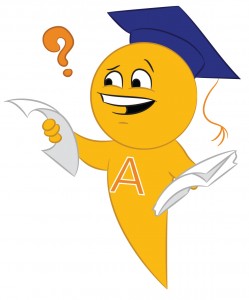The Nuts and Bolts of the NCAA Eligibility Center Process
The NCAA has done a fairly good job of getting the word out about what the requirements are to be an  academic qualifier. Less well known is the process prospects must go through to get that designation and their amateur certification from the NCAA Eligibility Center.
academic qualifier. Less well known is the process prospects must go through to get that designation and their amateur certification from the NCAA Eligibility Center.
1. Register with the Eligibility Center
This might seem self-explanatory, but to be certified as a qualifier and an amateur by the NCAA Eligibility Center (formerly the NCAA Clearinghouse), a prospect must first register. Registration involves requesting an account, providing contact information, giving details about your high school attendance, answering an amateurism questionnaire, and paying a fee. This is the longest and most involved part of the process for prospects and their parents, but it is also just the beginning.
2. Send Required Academic Information
It can be slightly confusing exactly what the Eligibility Center needs to certify you as an academic qualifier. The short answer is that the NCAA needs your high school transcript and an SAT or ACT score.
The longer answer starts with the NCAA’s two types of “complete” files. A file is complete and ready for preliminary certification if you have provided all transcripts from all high schools you have attended through 11th grade and an SAT or ACT score. A file is complete and ready for final certification if you have provided all transcripts from all high schools you have attended through 12th grade, one of those transcripts shows you have graduated from high school, and you have sent an SAT or ACT score.
All information must come directly from the source. Transcripts must come directly from your high school(s) or in sealed envelopes and test scores must come directly from the testing agency (College Board or ACT). And if you take even one class at a school, like during summer school or through an online program, that’s another transcript that must be sent to the Eligibility Center.
3. Complete All Tasks
The staff at the Eligibility Center will assign tasks to prospects during the certification process. All prospects will be assigned a set of standard tasks. Some of those tasks will be marked as complete automatically, like when a transcript arrives at the Eligibility Center. Others must be manually marked as complete by the prospect on the Eligibility Center website. All notices of these tasks will be sent to the email a prospect gives to the Eligibility Center, so the email address used should be one that is checked frequently.
In some cases, a prospect will be signed additional tasks. Those tasks are normally requests for additional information, additional documents, or to answer questions. Prospects likely to receive additional tasks are international prospects, elite athletes, prospects who have attended multiple high schools, prospects who have taken online or nontraditional courses, and prospects who have repeated a course.
4. Request Final Certification
Requesting final certification is normally the last thing a prospect does with the Eligibility Center. The request can be made starting April 1 before a prospect starts college if entering in the fall, or October 1 if entering midyear. The request requires a prospect to affirm that all information provided is accurate and complete. The file is then locked and no further changes to a prospect’s information or amateurism questionnaire can be made (transcripts and test scores can still be sent).
5. Be Added to an Institutional Request List
This step is listed last not because it happens later in the process but because prospects cannot do it on their own. Before a prospect’s file is reviewed at the Eligibility Center, a Division I or Division II school must request it be reviewed by adding the prospect to an Institutional Request List or IRL. Every year, roughly half of the prospects who register with the Eligibility Center are never certified, many because they are never added to an IRL.
Prospects need to remember: the Eligibility Center does not help you get recruited. You do need to be working on getting certified during the recruiting process because certain recruiting activities, like taking an official visit or receiving a written scholarship offer, require you to have registered with the Eligibility Center and for a school to place you on its IRL. But it is not a place where coaches go looking for athletes to recruit, it’s a place where coaches ask compliance officers to look for the athletes they are already recruiting.
Prospects should also remember that only NCAA Division I and Division II athletes need to register with the NCAA Eligibility Center. Division III athletes do not need to register and the NAIA has its own eligibility center. Keep this in mind before spending the $65-$95 it costs to register with the Eligibility Center.
Do you still have questions about the eligibility process? Just ask us in the comment section below, or connect with us on Facebook, Twitter, or Google+!
Find opportunities for athletic scholarships and get connected to college coaches.
